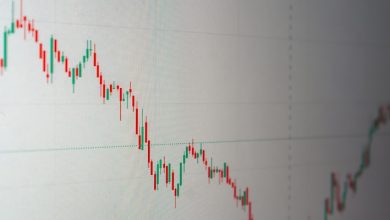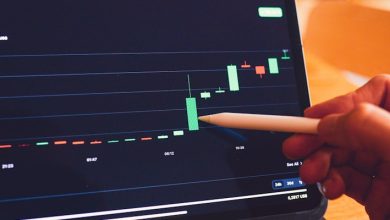Using Moving Averages to Predict Market Movements

- Understanding Moving Averages in Stock Market Analysis
- Types of Moving Averages Used in Predicting Market Movements
- How to Interpret Moving Average Crossovers for Market Prediction
- The Importance of Moving Averages in Technical Analysis
- Factors to Consider When Using Moving Averages for Market Forecasting
- Common Mistakes to Avoid When Using Moving Averages in Trading
Understanding Moving Averages in Stock Market Analysis
Moving averages are a fundamental tool used in stock market analysis to help traders and investors identify trends and potential market movements. By calculating the average price of a security over a specific period of time, moving averages can smooth out price fluctuations and provide a clearer picture of the overall trend.
There are two main types of moving averages that are commonly used: the simple moving average (SMA) and the exponential moving average (EMA). The SMA calculates the average price by adding up the closing prices of a security over a certain number of days and dividing by that same number of days. The EMA, on the other hand, gives more weight to recent prices, making it more responsive to current market conditions.
Traders often use moving averages to generate buy or sell signals. One common strategy is to look for a crossover, where a shorter-term moving average crosses above or below a longer-term moving average. This can indicate a change in trend and signal a potential buying or selling opportunity.
It is important to note that moving averages are lagging indicators, meaning they are based on past prices and may not always accurately predict future price movements. However, when used in conjunction with other technical analysis tools, moving averages can be a valuable tool in helping traders make informed decisions in the stock market.
Types of Moving Averages Used in Predicting Market Movements
When it comes to predicting market movements using moving averages, there are several types that traders commonly rely on. Each type has its own unique characteristics and is used in different situations to analyze trends and make informed decisions.
- Simple Moving Average (SMA): The SMA is the most basic type of moving average. It calculates the average price of a security over a specific period, smoothing out price fluctuations to identify trends.
- Exponential Moving Average (EMA): The EMA gives more weight to recent prices, making it more responsive to current market conditions. This can help traders identify trends earlier than with the SMA.
- Weighted Moving Average (WMA): The WMA assigns greater weight to more recent data points, similar to the EMA. This can help traders react more quickly to changing market conditions.
- Smoothed Moving Average (SMMA): The SMMA is a type of moving average that places equal weight on all data points within the chosen period. This can help reduce the impact of outliers on the average price.
By understanding the different types of moving averages and how they work, traders can make more informed decisions when predicting market movements. Each type has its own strengths and weaknesses, so it’s important to choose the right one based on the specific market conditions and trading strategy.
How to Interpret Moving Average Crossovers for Market Prediction
When interpreting moving average crossovers for market prediction, it is essential to understand the signals they can provide. A moving average crossover occurs when a short-term moving average crosses above or below a long-term moving average. This event is often seen as a potential indicator of a change in market direction.
One common strategy is to look for a golden cross, which happens when a short-term moving average crosses above a long-term moving average. This can signal a bullish trend and may be seen as a buying opportunity. Conversely, a death cross occurs when a short-term moving average crosses below a long-term moving average, indicating a potential bearish trend and a possible selling opportunity.
It is important to note that moving average crossovers are lagging indicators, meaning they may not provide real-time signals. Traders often use other technical analysis tools in conjunction with moving averages to confirm potential trends. Additionally, it is crucial to consider the overall market context and not rely solely on moving average crossovers for market predictions.
The Importance of Moving Averages in Technical Analysis
Moving averages are a crucial tool in technical analysis for predicting market movements. They help smooth out price data to identify trends over a specified period. By calculating the average price of a security over a set number of days, moving averages provide valuable insights into whether an asset’s price is trending up, down, or moving sideways.
One of the main benefits of using moving averages in technical analysis is their ability to filter out noise and fluctuations in price data. This allows traders and investors to focus on the overall trend of an asset, making it easier to make informed decisions about buying or selling. By identifying key support and resistance levels, moving averages can also help determine entry and exit points for trades.
There are different types of moving averages that traders can use, including simple moving averages (SMA) and exponential moving averages (EMA). SMAs give equal weight to all prices in the calculation, while EMAs give more weight to recent prices. Traders often use a combination of both types of moving averages to get a more comprehensive view of market trends.
Overall, incorporating moving averages into technical analysis can help traders and investors make more informed decisions about when to enter or exit trades. By providing a clearer picture of market trends and filtering out noise, moving averages play a vital role in predicting future price movements and maximizing profits in the financial markets.
Factors to Consider When Using Moving Averages for Market Forecasting
When using moving averages for market forecasting, there are several factors to consider in order to make accurate predictions. One key factor to keep in mind is the time frame of the moving average. Short-term moving averages, such as the 10-day moving average, are more sensitive to price changes and can provide quick signals for market movements. On the other hand, long-term moving averages, like the 200-day moving average, are more stable and can help identify overall trends in the market.
Another important factor to consider is the type of moving average to use. The most commonly used moving averages are the simple moving average (SMA) and the exponential moving average (EMA). The SMA gives equal weight to all data points in the calculation, while the EMA gives more weight to recent data points. Depending on the market conditions and the level of volatility, one type of moving average may be more suitable than the other.
Additionally, it is crucial to consider the crossover of moving averages. A bullish crossover occurs when a short-term moving average crosses above a long-term moving average, indicating a potential uptrend in the market. Conversely, a bearish crossover happens when a short-term moving average crosses below a long-term moving average, signaling a possible downtrend. Monitoring these crossovers can help traders make informed decisions about buying or selling assets.
Furthermore, it is essential to take into account the significance of moving average support and resistance levels. These levels can act as barriers that prices have difficulty breaking through. When prices approach a moving average support level, it may indicate a potential buying opportunity as the price is likely to bounce off the support level. Conversely, when prices approach a moving average resistance level, it may suggest a selling opportunity as the price could reverse direction.
In conclusion, when using moving averages for market forecasting, it is important to consider factors such as the time frame of the moving average, the type of moving average, crossover signals, and support/resistance levels. By analyzing these factors carefully, traders can improve their ability to predict market movements and make more informed trading decisions.
Common Mistakes to Avoid When Using Moving Averages in Trading
When utilizing moving averages in trading, there are several common mistakes that traders should avoid to ensure accurate predictions of market movements.
- One mistake to avoid is relying solely on a single moving average. Using multiple moving averages can provide a more comprehensive view of the market trends and reduce the risk of false signals.
- Another common mistake is not considering the time frame of the moving averages. It is essential to match the time frame of the moving averages with the trading strategy to ensure accurate predictions.
- Additionally, some traders make the mistake of using moving averages in isolation without considering other technical indicators. It is crucial to use moving averages in conjunction with other tools to confirm trends and signals.
- Moreover, traders should avoid using moving averages during periods of low volatility as they may generate false signals. It is essential to adjust the parameters of the moving averages based on market conditions.
- Lastly, one common mistake is not staying updated on market news and events that can impact the accuracy of moving averages. It is important to consider external factors that can influence market movements.
By avoiding these common mistakes and utilizing moving averages effectively in trading, traders can make informed decisions and improve their overall success in predicting market movements.



